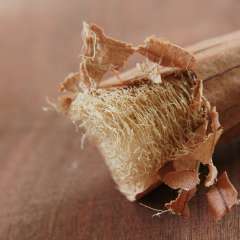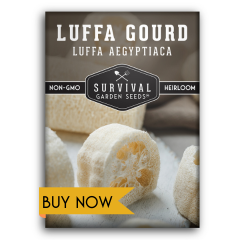You’ve carefully tended your luffa vines and now have an abundance of large luffa gourds. Now you have to figure out how to turn those giant gourds into useful sponges. The process will largely depend on your location and the length of your growing season.
The ideal method is to allow the gourds to hang on the vine to ripen and dry as much as possible; however, if you are in an area that has a hard frost before the gourds are fully dry, you will need to harvest them earlier and dry them off the vine. You should harvest gourds immediately after a hard frost; otherwise, they will not continue to ripen and will just begin to rot.
Processing Ripe, Brown Luffas
If you’ve been able to leave your gourds on the vine to mature and they have begun to develop dry brown skin, you can pick them and sit them in a dry, shady area for a few days until they are completely dry. At this point, you should be able to easily pull off the end of the luffa that was attached to the vine. If it’s hard to remove, then allow your luffa to dry for a few more days and try again.
The next step is to remove the hard outer skin. You can throw the gourds on the ground or bang them against a table to crack the skin and peel it off. Take advantage of the vertical seams along the length of the gourd by slipping your thumb under the skin and pulling it away.

After peeling off the skin, shake out as many seeds as possible. Save these seeds, because luffa is an annual and you’ll need to plant new vines next season.
Thoroughly rinse your gourd to remove any remaining skin and seeds. Now you can cut your gourd into pieces of the desired size. Allow these pieces to dry thoroughly over several days, rotate to allow airflow, and ensure your sponge is completely dry before storing so that mildew does not develop.
Processing Unripe, Green Luffas
If you live in an area with a shorter growing season and your luffa gourds are in danger of being hit with a hard frost, you can harvest the gourds and allow them to dry out off of the vine. While it is possible to dry the gourds in a warm dry spot over the course of several weeks, green gourds contain a lot of sap and moisture and you run the risk of rot and mold before the gourds are completely dry.
One way to speed up the drying process is to put the gourds in a warm oven and then peel off the outer skin before setting the gourds to complete their drying process.
The Oven Method
- Cut off both ends of the gourd and perhaps cut it in half or thirds. This accomplishes two things. It will allow more air to flow through the gourd and it will allow it to better fit onto a baking sheet.
- Cut a couple of slits along the seams of the gourd, again, to allow airflow and make it easier to peel.
- Place the gourd onto a baking sheet and put in a warm oven (about 300 degrees Fahrenheit) for 30 to 40 minutes.
- Remove the gourds from the oven and allow them to cool. At this point, the skin should be a darker brownish-green.
- Peel the outer skin off of the gourd.
- Rinse your gourds well and wring out as much moisture as possible.

Now you can set your sponges somewhere warm and dry to fully cure. You might want to sit them out in the sun during warm days. If possible, try to stand your sponges on end instead of laying them on their side as this will improve air circulation and prevent mildew.
It may take a couple of weeks for your sponges to fully dry. At this point, you can follow the same process as ripened gourds by shaking out the seeds, rinsing them thoroughly, and cutting them to size.
Luffa sponges are not only a sustainable and eco-friendly alternative to synthetic sponges but also versatile and practical for a wide range of uses. By growing and processing your own luffa gourds, you can enjoy the satisfaction of using natural products and reducing your environmental footprint. Whether you use them as a natural scrubber for your skin, add them to homemade soap, or use them as a dish cleaning tool, luffa sponges offer a natural functionality that is hard to resist.

























